Who was the King of Laysan Island? 10 Amazing Facts from the Life of Max Schlemmer
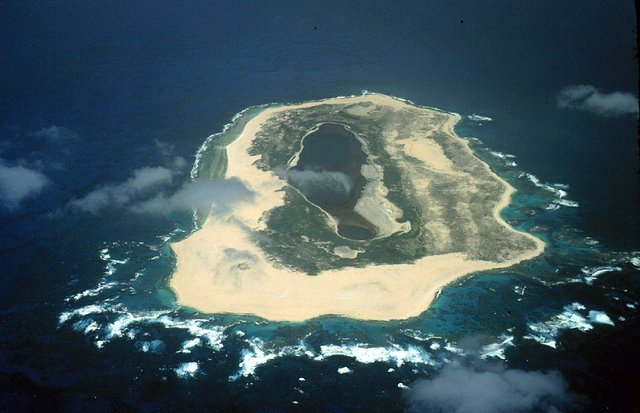
Months ago, I wrote a post about albatrosses and wondered at the name Laysan. In addition to Laysan albatrosses, there are Laysan ducks, Laysan finches, and several extinct birds and insects which bear the same name. Laysan, of course, refers to Laysan Island in Hawaii’s Northwestern (Leeward) Island chain. It’s only about 1.5 miles long and one mile wide (2.4 km x 1.6 km), part of that land being covered by a salty lake in the middle of the island.
Laysan is unusual because, unlike most tiny islands in the middle of the ocean, it also has fresh water. That allowed land birds to develop there as well as seabirds, without interference from any mammals or reptiles (until humans arrived). Despite being a unique place, Laysan probably will disappear this century as sea levels rise.
Reading about Laysan Island led me to the story of its most famous human resident, Max Schlemmer.
In the 1880s and 90s, Schlemmer developed an interest in Laysan Island and established squatters rights to it. He built a home and business there, becoming known in Hawaii as the “King of Laysan”. During his life, in addition to phosphate mining and bird feather businesses on Laysan, Schlemmer also worked on whaling ships, sugar plantations, as a bar owner, as a boat captain, as a motorman for the Honolulu Rapid Transit, and as a captain in the Honolulu Police force.
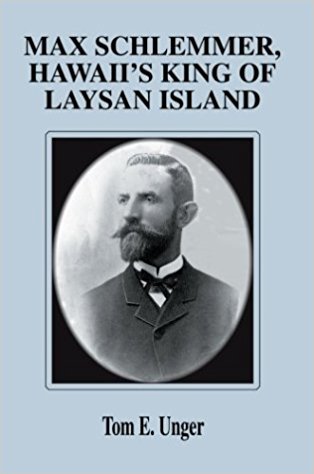
Schlemmer was such a character that I ordered a book about him. Max Schlemmer, Hawaii’s King of Laysan Island turned out to be a family history of sorts, written by Max’s grandson, Tom Unger. Unger wrote a very compelling story of his grandfather’s life, sourced from media accounts, public records, and family documents and stories. As a boy, Unger himself spent time with an elderly Schlemmer and heard some his grandfather’s tales firsthand.
From that book and my other readings, here are several amazing facts from the life of Max Schlemmer. The book contains many more.
1. In the 1880s, Schlemmer and a friend stole a small whaleboat and traded it for passage to Hawaii
Schlemmer had been working as a crewmember on whaling ships in the Pacific. After signing on with a ship called Mount Walruston, Max and another German crewmember decided they hated their first officer. This officer was a strict dictator and the other German was making plans to murder him. Max convinced his friend that they both should leave the ship instead.
While off the coast of Mexico, they slipped over the side in the night, detached a small whaleboat (rowboat) filled with equipment, and rowed it to shore. They hid out in a cove until the Mount Walruston had sailed away. Max had been to Hawaii on an earlier voyage and wanted to return there, so they waited until another whaling ship came to port, bartering the whaleboat and its equipment for a ride to the islands.
2. Somehow, Max Schlemmer acquired squatter’s rights to Laysan Island in the 1880s, despite never having visited it
Agricultural plantations were booming on the major Hawaiian Islands and a cheap source of fertilizer was needed. Max worked for a time on a sugar plantation on the island of Kauai.

The Pacific Guano & Fertilizer Company was established and Max was hired to be its superintendent on Laysan Island, which was rich with centuries’ worth of bird droppings. Because he had rights to the island, he received a small royalty from anything mined there. Max moved his family to Laysan Island, despite the fact that it was inhabited only by birds and it was a small, windy, nearly treeless island with sandstorms (not exactly a paradise).
3. Feathers for hats were so popular at the time that some of the birds on Max Schlemmer’s island were worth their weight in gold (literally)
At various points, Schlemmer had an interest in selling bird feathers, though he never wanted the Laysan birds to be hunted in numbers that threatened their sustainability. He made visits to Japan to make deals for feather sales. Unfortunately, bird pirates also came to the island and killed birds in far greater numbers, at times devastating the populations.
Here is a video of the island in 2012, showing the albatross and other major species.
4. In 1893, while staying in Honolulu on the island of Oahu, Max Schlemmer was hired as a police captain, and served in that job until the Queen was deposed
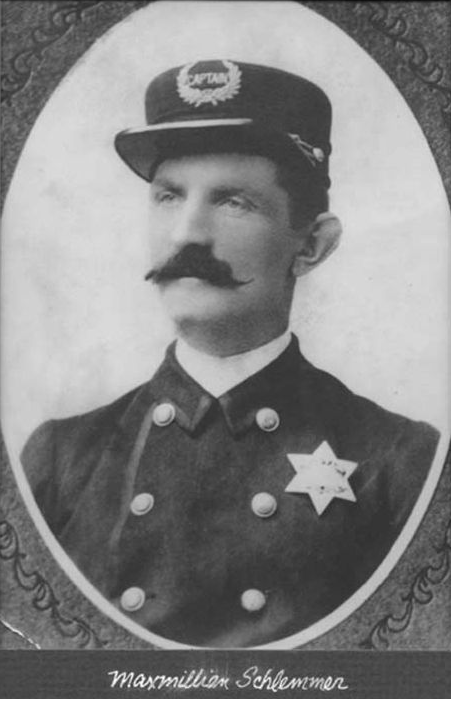
He was employed by the Kingdom of Hawaii and loyal to Queen Liliuokalani. However, a group of American business owners and sugar planters formed a private militia and took control of the government that year. There was no armed conflict. The queen yielded to their show of force, under protest, to avoid any loss of life.
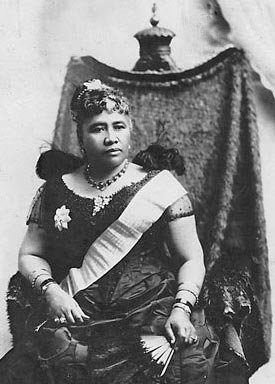

Queen Liliuokalani, the last queen of Hawaii, and the militia.
With the queen deposed, the businessmen installed Sanford Dole (a judge and member of the pineapple family) as President of Hawaii. The United States annexed the islands a few years later. Schlemmer quit the police force the day after this coup.
5. Max Schlemmer married a daughter of German immigrants, who bore three children. After she died, he married her 16-year-old sister, who bore fourteen more children (17 children total).
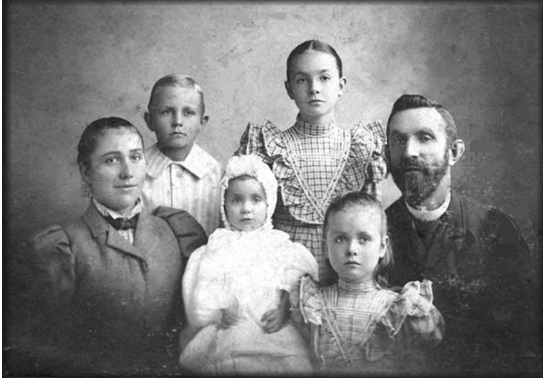
Schlemmer Family in 1898, including Max's first four children.
For much of this time, they lived on tiny Laysan Island, alone except for the guano mining operation’s workers (who were mostly Japanese) and lots of birds.
6. Max Schlemmer made studies of the bird population on Laysan and collected several specimens, which he sent to Harvard University
He kept extensive records and was never known to have taken more than the 39 birds he recorded. However, he certainly took a lot of bird eggs, which must have had an adverse impact on the population there, and he allowed some culling of birds for feathers as well. The worst bird carnage came at the hands of Japanese feather poachers and it happened during a period when Schlemmer was not on the island; he was horrified at the damage.
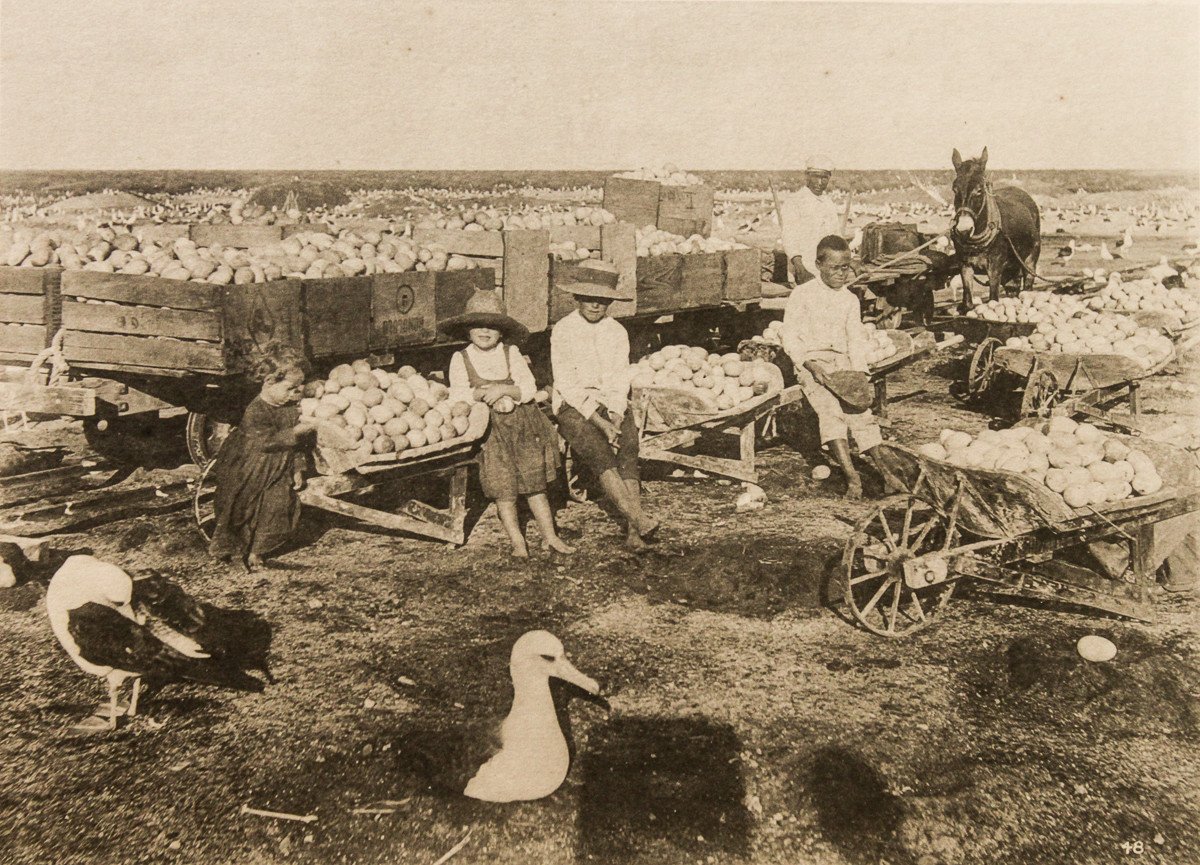
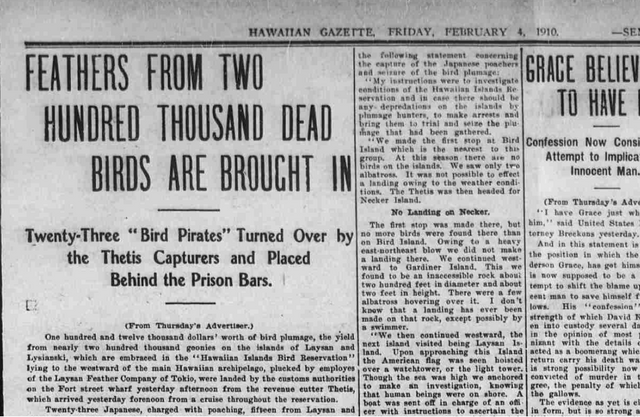
7. However, Shlemmer may be most famous for having introduced rabbits that devastated Laysan Island
Believing they would be a good source of meat and might enable meat canning and hide tanning industries on the small island, Max Shlemmer brought European domestic rabbits, English hares, Belgian hares, and guinea pigs to Laysan in the early 1900s, releasing “a slew of them” on the island. These creatures multiplied quickly, ate all of the native grass and other vegetation, and soon overran the island. Several bird species had depended on the vegetation and went extinct, while the wind blew away some of the sand and sandstorms became worse.
There were several biological survey expeditions to Laysan during Schlemmer’s tenure there. In 1912, the U.S. Biological Survey sent a team to exterminate the rabbits. They noted that the island’s vegetation was nearly gone, resulting in the disappearance of certain species of plants, insects, and birds that had existed nowhere else in the world. The survey party killed 5,024 rabbits, but ran out of ammunition before they could exterminate them all.
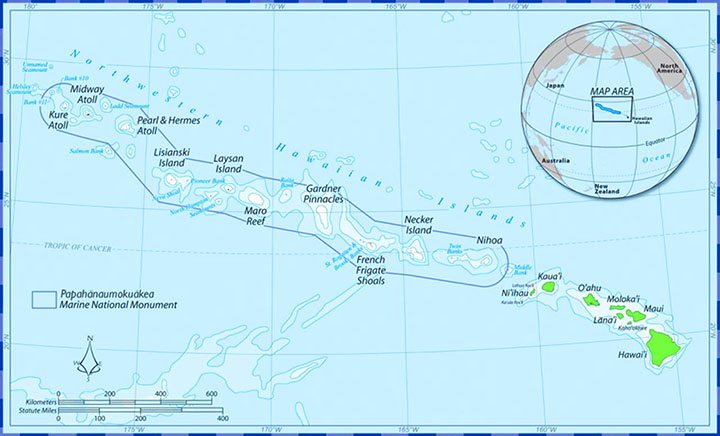
8. In 1909, U.S. President Theodore Roosevelt created the Hawaiian Islands Bird Reservation, which included Laysan Island
Only months earlier, with most guano having been mined out and that business declining, Max Schlemmer had made two deals that would help him profit from the feather business. First, he visited Japan and granted a company there exclusive rights to the guano and feathers. Second, he sought and received a commission as police constable so that he could protect the birds of the island and prevent poaching.
However, both of these essentially became irrelevant as soon as the U.S. Department of Agriculture took over the island and authorized the U.S. Navy to prevent any bird poaching there in the new Bird Reservation. Soon after, Schlemmer received a letter from the Hawaiian territorial government cancelling his rights to the island. Months later, he was indicted for poaching on a bird reservation, though he ultimately won the court case.
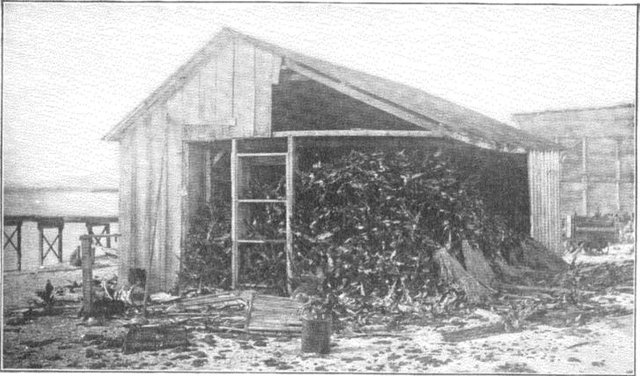
A poacher's temporary structure, filled with bird wings for feather sales.
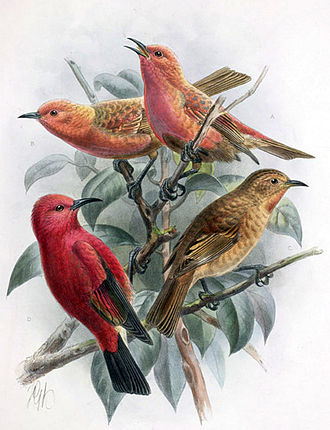
The Laysan Honeycreeper, which went extinct.
9. Schlemmer then tried to get himself hired as a federal bird warden for Laysan Island
As he was campaigning to be hired as a warden for Laysan, he was told his candidacy may be viewed more favorably if he was actively working “on the job” already. So he obtained a yacht and headed to Laysan, finding that poachers had devastated the bird population. While there, his yacht escaped its moorings and was found three miles out at sea; Max and his companions had to row a skiff out to it and bring it back in.
Shortly thereafter, another small boat appeared. It turned out to be a group that had been shipwrecked nearby. Because Max and his companions were expecting a visit from a larger supply ship, they loaned the shipwreck survivors their yacht. On the voyage to Midway, it was promptly wrecked in a storm. And the supply ship never arrived on Laysan. Max and his companions were close to starvation when another ship happened by the island and saw their distress signal, stopping to pick them up.

A WWI-era Transmitter.
10. On his return to Honolulu, Max Schlemmer was arrested as a German spy
World War I was raging in Europe and German-Americans were viewed with suspicion. The rumor was that Max had kept a wireless radio on Laysan and communicated with the German government. Eventually, he was cleared of the spy charges, about the same time he learned that his yacht had been wrecked, but the whole saga left him broke. Afterwards, he managed to get a job working for one of his previous employers in Honolulu, Hawaii, and his family finally settled there.
The King of Laysan had a tough but amazing life
Max Schlemmer was a Renaissance man and an obsessive entrepreneur. His family remembered him fondly and he was said to have been a very warm and caring person. The man’s life was not easy and he certainly made his share of mistakes. His lifelong quest to establish himself on Laysan Island never really came true. Nevertheless, what a life it was.
If you’re interested in reading more, and there is a lot more, I recommend the book Max Schlemmer, Hawaii’s King of Laysan Island by Tom Unger.
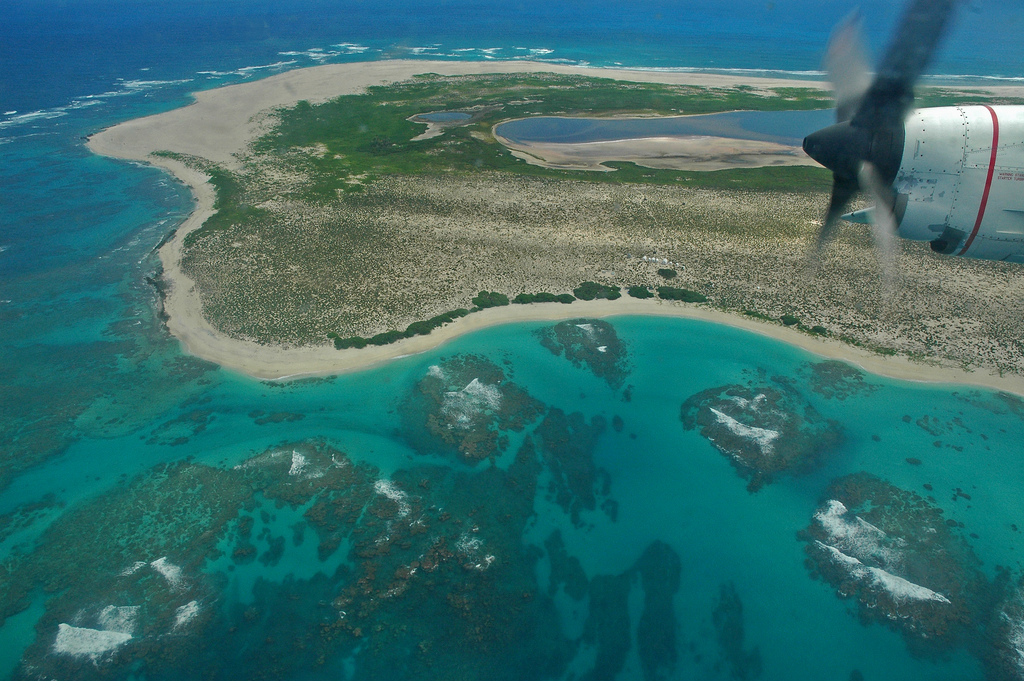
Sources:
King of Laysan Island book: https://www.amazon.com/Schlemmer-Hawaiis-King-Laysan-Island/dp/0595661033
Schlemmer Family Papers, Smithsonian Institution Archives: https://siarchives.si.edu/collections/siris_arc_259173
Our Vanishing Wildlife by William T. Hornaday (New York Zoological Society, 1913), Chapter 14: http://www.fullbooks.com/Our-Vanishing-Wild-Life4.html
Overthrow of Hawaiian Kingdom in 1893: http://hawaiiankingdom.org/blog/who-were-these-insurgents-calling-themselves-the-committee-of-safety/
Laysan Island: https://en.wikipedia.org/wiki/Laysan
Max Schlemmer: https://en.wikipedia.org/wiki/Max_Schlemmer
All photos are public domain, except for the photos of Max Schlemmer and family, which come from the King of Laysan book.
thanks for this information.
You got a 12.82% upvote from @postpromoter courtesy of @fproductions!
Great story donkey, I always find the past history of Hawaii interesting and how many people dont know about it. I guess Schlemmer was part of the wave of outsiders who would eventually settle there.
For sure. I wasn't aware that there was a German immigrant community on Kauai, but apparently they became a part of the plantation culture there like so many others.
Very Nice comments dear brother
Thanks for sharing the amazing facts....I love reading history.
Thank you @donkeypong for such great historical post with lot of details. Keep it up
Thanks. Glad you appreciated it.
This is a really great story. I wonder how many birds would have been inhabitants of that island at some point. The "King of Laysan" is truly a remarkable man...
@donkeypong - Amazing tale. The island must have been teeming with hundreds of bird species at one time. I was aware of the Layson Albatrosses but would be very interested in the other avian inhabitants of the island. As you can see from my blogs, I am passionate about wildlife and really like to spread wildlife awareness through my photographs and blogs.
Mr. Schlemmer seems to have been a resourceful gentleman but I wish he had worked more to avoid extinction of bird species as he carried on his hat feathers business.
Thanks for this interesting account of Laysan island history. Upvoted full.
I am really impressed by the research you put in for your blogs. I always look up to them for guidance. I request you to take a look at my latest blogs on wildlife and provide your comments. Thanks again for all your support so far.
Regards,

@vm2904
Amazing facts about history.....I loved and enjoyed reading it.
You have some great animal posts also!
Thank you so much for your appreciation, Means a lot.
Thank you for summering up these facts! When I saw his picture I thought I know something about this guy but i couldn't figure what it was. Then I got it! He brought the rabbits to the island! But now I finally have some other facts about his life which was a quite interesting read!
Yes, that was the first thing I learned about him also. It turned out there was more worth learning.
I love that history and story! I watch always at the NATIONAL GEOGRAPHIC about what happened on earth and the reality... Especially the treasure hunt at the sea! And the Titanic treasures...
Volcanic rupture! Animal planet! Storms! Hurrican! Story of Jesus! I love this...
Great article I enjoyed it all the way and I wish it didn't have to end...... Am a great fan of your work
wow nice story..its really interesting to know the history of that beautiful island..thanks for sharing these info with us :)